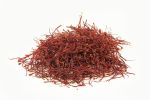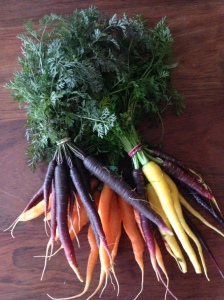Sobre a importância dos quintais, cada vez mais desaparecidos e, com isso, as nossas raízes também.
sexta-feira, 27 de julho de 2018
Fatos e usos da pitomba
Texto:
Engenheiros agrônomos Beatriz Garrido Boffette e Marcos Roberto Furlan
Nativa, e mais especificamente da Amazônia brasileira (STAFUSSA et al., 2018). Origem do nome vem do Tupi, e significa chute forte ou bofetada. Seu nome científico é Talisia esculenta (A. St.-Hil.) Radlk. e pertence à família Sapindaceae, a qual abriga outras frutíferas e o famoso guaraná.

Pitombas.
Foto: Arianne Monteiro Melo Angelelli
A pitombeira é considerada uma árvore de pequeno porte, por possuir cerca de 10 metros de altura. No Brasil, é encontrada em boa parte, pois se dá bem na região Amazônica, na Mata Atlântica e floresce com mais intensidade no verão.
Fatos e usos da pitomba
1. Nomes populares, além de pitomba, podem ser, por exemplo, caruiri, pitombeira, pitombarana ou olho-de-boi.
2. Assim como a maioria das frutíferas nativas, é pouco estudada quanto aos aspectos nutricionais, funcionais ou medicinais. Mas as poucas pesquisas revelam seu potencial.
3. Rica em Vitamina C, é consumida in natura ou no preparo de licor. Em pesquisa realizada por Fraga et al. (2017), o teor de vitamina C da casca da pitomba foi de 128,34±7,18 mg de ácido ascórbico/100g.
4. Não é comum ser encontrada no comércio, exceto nas regiões Nordeste e Norte do Brasil.
5. A presença de taninos nas folhas e na casca proporciona seu uso no couro curtido, para evitar que ele apodreça.
6. O fruto é rico em flavonoides (STAFUSSA et al., 2018) e outras substâncias que justificam ser considerado, de acordo com Souza et al. (201), com moderada ação antioxidante. No entanto, Neri-Numa et al. (2014) detectaram que extrato da pitomba apresenta boa atividade antioxidante no ensaio ORAC.•
7. A sua semente, que representa metade do peso total da fruta brasileira, é uma alternativa para a utilização de amidos não convencionais (CASTRO et al., 2018).
8. Há casos de intoxicação em animais que consumiram folhas e frutos da pitombeira.
9. A pitomba apresentou atividade antiproliferativa contra o melanoma e adenocarcinoma de ovário (NERI-NUMA et al., 2014).
10. Miricetina e quercetina são compostos encontrados na fruta (NERI-NUMA et al., 2014).
Referências
CASTRO, Deise Souza de et al. Isolation and characterization of starch from pitomba endocarp. Food Research International, [s.l.], p.1-1, jun. 2018. Elsevier BV. http://dx.doi.org/10.1016/j.foodres.2018.06.032.
FRAGA et al. Composição centesimal e teor de vitamina C da casca da pitomba. In: II Congresso Internacional de Atividade Física, Nutrição e Saúde. v.1, n.1, 2017. Disponível em: https://eventos.set.edu.br/index.php/CIAFIS/article/view/6519/2513. Acesso em: 10 de jul. 2018.
NERI-NUMA, Iramaia Angélica et al. Preliminary evaluation of antioxidant, antiproliferative and antimutagenic activities of pitomba (Talisia esculenta). Lwt - Food Science And Technology, [s.l.], v. 59, n. 2, p.1233-1238, dez. 2014. Elsevier BV. http://dx.doi.org/10.1016/j.lwt.2014.06.034.
SOUZA, Mayane P. de et al. Phenolic and aroma compositions of pitomba fruit (Talisia esculenta Radlk.) assessed by LC–MS/MS and HS-SPME/GC–MS. Food Research International, [s.l.], v. 83, p.87-94, maio 2016. Elsevier BV. http://dx.doi.org/10.1016/j.foodres.2016.01.031.
STAFUSSA, Ana Paula et al. Bioactive compounds of 44 traditional and exotic Brazilian fruit pulps: phenolic compounds and antioxidant activity. International Journal Of Food Properties, [s.l.], v. 21, n. 1, p.106-118, jan. 2018. Informa UK Limited. http://dx.doi.org/10.1080/10942912.2017.1409761.
quarta-feira, 25 de julho de 2018
terça-feira, 24 de julho de 2018
segunda-feira, 23 de julho de 2018
domingo, 22 de julho de 2018
Botany Lab of the Month, Presidential Inauguration Edition: Saffron
If you like your spices gold-colored and expensive, find some fresh Crocus sativus flowers and grab ‘em by the…disproportionately large female reproductive organ. Small hands might work best, though it might turn your skin orange. Saffron is probably from the Middle East. If that bothers you, you may want to ban it from your spice shelves, however ill that bodes for the quality of your cabinet. After all, there is a stigma against that sort of thing.
The most expensive oversized reproductive organ in the world
A pile of dried saffron stigmas (“threads”). Photo from Wikipedia
You may know that saffron is the most expensive spice in the world. A Spanish farmer sold his crop of high quality saffron this year for four euros per gram, which is a ninth of today’s price of gold (36 euros per gram). Saffron is expensive because its production requires a huge amount of labor and land. Saffron production is labor- and land-intensive because saffron is a botanically unique food item that defies mechanical harvest and accounts for a miniscule proportion of the plant that bears it. The saffron threads sold as spice are the dried stigmas of the flowers of the saffron crocus (Crocus sativus, family Iridaceae). Recall that the stigma is the part of the flower’s female reproductive organs that catches pollen. Pollen travels from the stigma through the style into the flower’s ovary (collectively, the stigma, style, and ovary comprise the pistil).
Carrot top pesto through the looking glass
Link:
https://botanistinthekitchen.blog/2017/09/23/carrot-top-pesto-through-the-looking-glass/
Posted on September 23, 2017 by Jeanne L. D. Osnas
https://botanistinthekitchen.blog/2017/09/23/carrot-top-pesto-through-the-looking-glass/
Posted on September 23, 2017 by Jeanne L. D. Osnas
Isomers are molecules that have the same chemical constituents in different physical arrangements. Some terpenoid isomers have very different aromas and are important food seasonings. A batch of carrot top pesto led to an exploration of intriguing terpenoid isomers in the mint, carrot, and lemon families.
“Oh, c’mon. Try it,” my husband admonished me with a smile. “If anyone would be excited about doing something with them, I should think it would be you.”
The “them” in question were carrot tops, the prolific pile of lacy greens still attached to the carrots we bought at the farmer’s market. I have known for years that carrot tops are edible and have occasionally investigated recipes for them, but that was the extent of my efforts to turn them into food. My excuse is that I harbored niggling doubts that carrot tops would taste good. Edible does not, after all, imply delicious. My husband had thrown down the gauntlet, though, by challenging my integrity as a vegetable enthusiast. I took a long look at the beautiful foliage on the counter.
“Fine,” I responded, sounding, I am sure, resigned. “I’ll make a pesto with them.”
Carrot tops, it turns out, make a superb pesto. I have the passion of a convert about it, and not just because my carrot tops will forevermore meet a fate suitable to their bountiful vitality. The pesto I made combined botanical ingredients from two plant families whose flavors highlight the fascinating chemistry of structural and stereo isomers.
Assinar:
Comentários (Atom)

